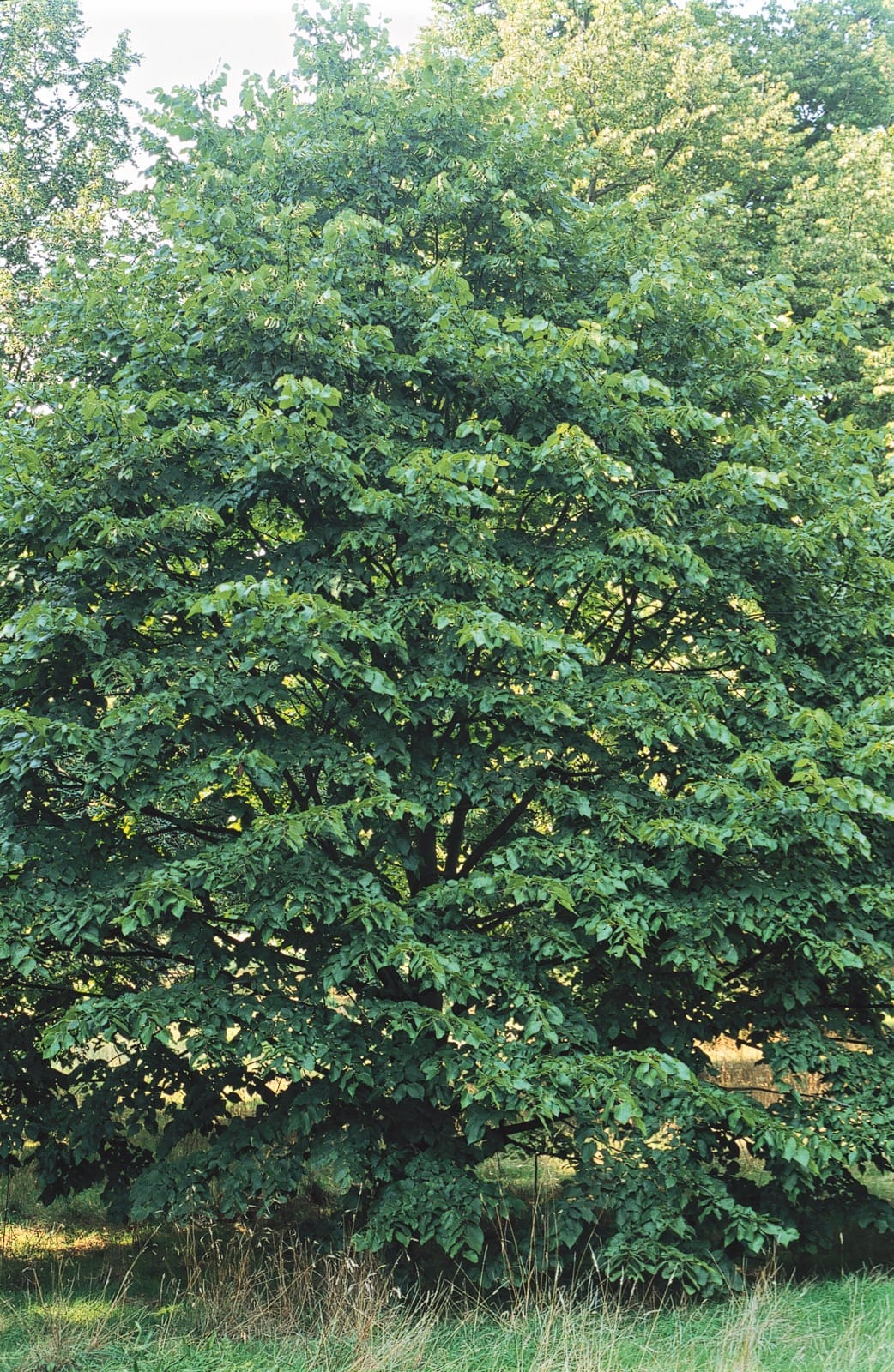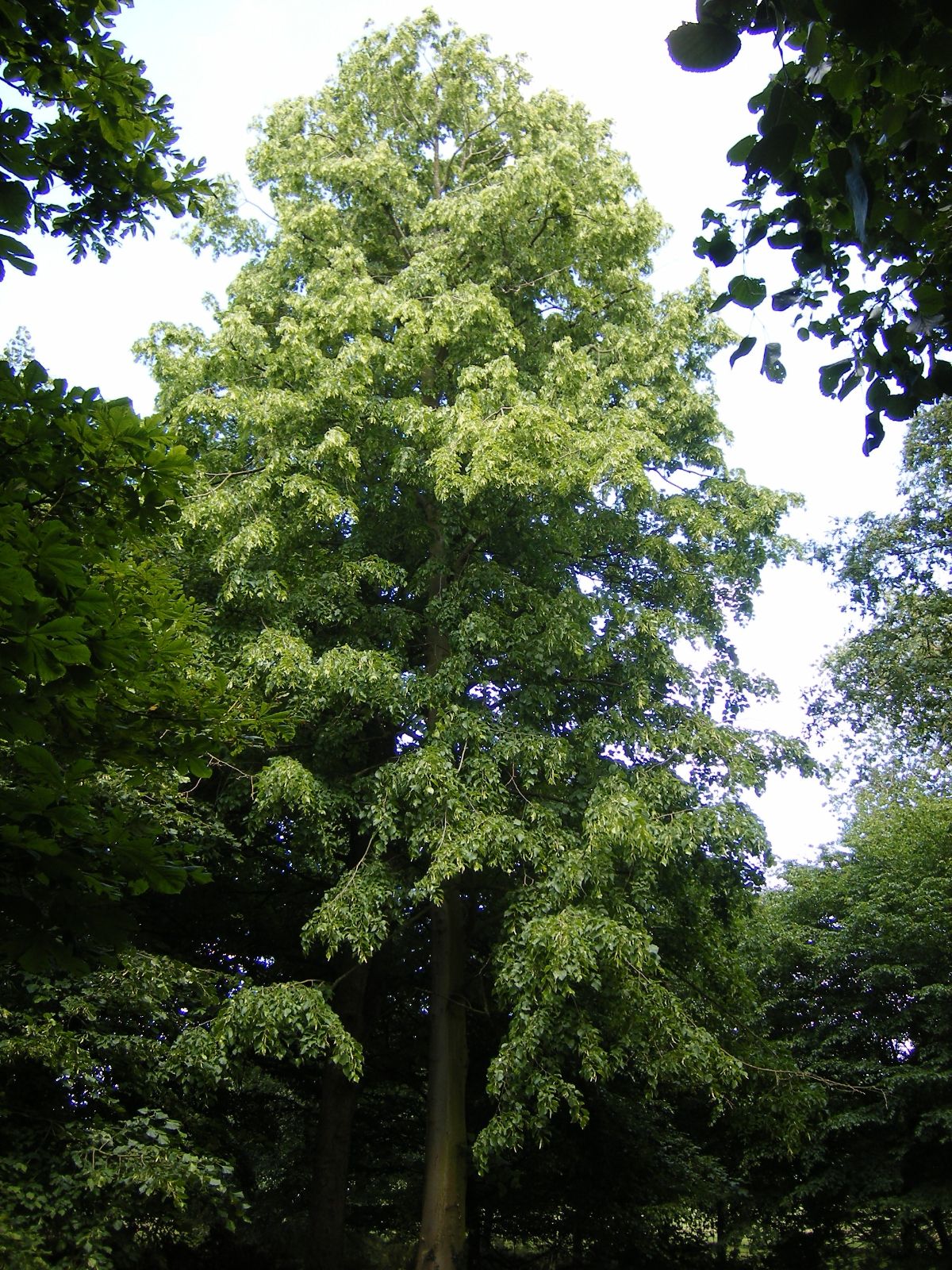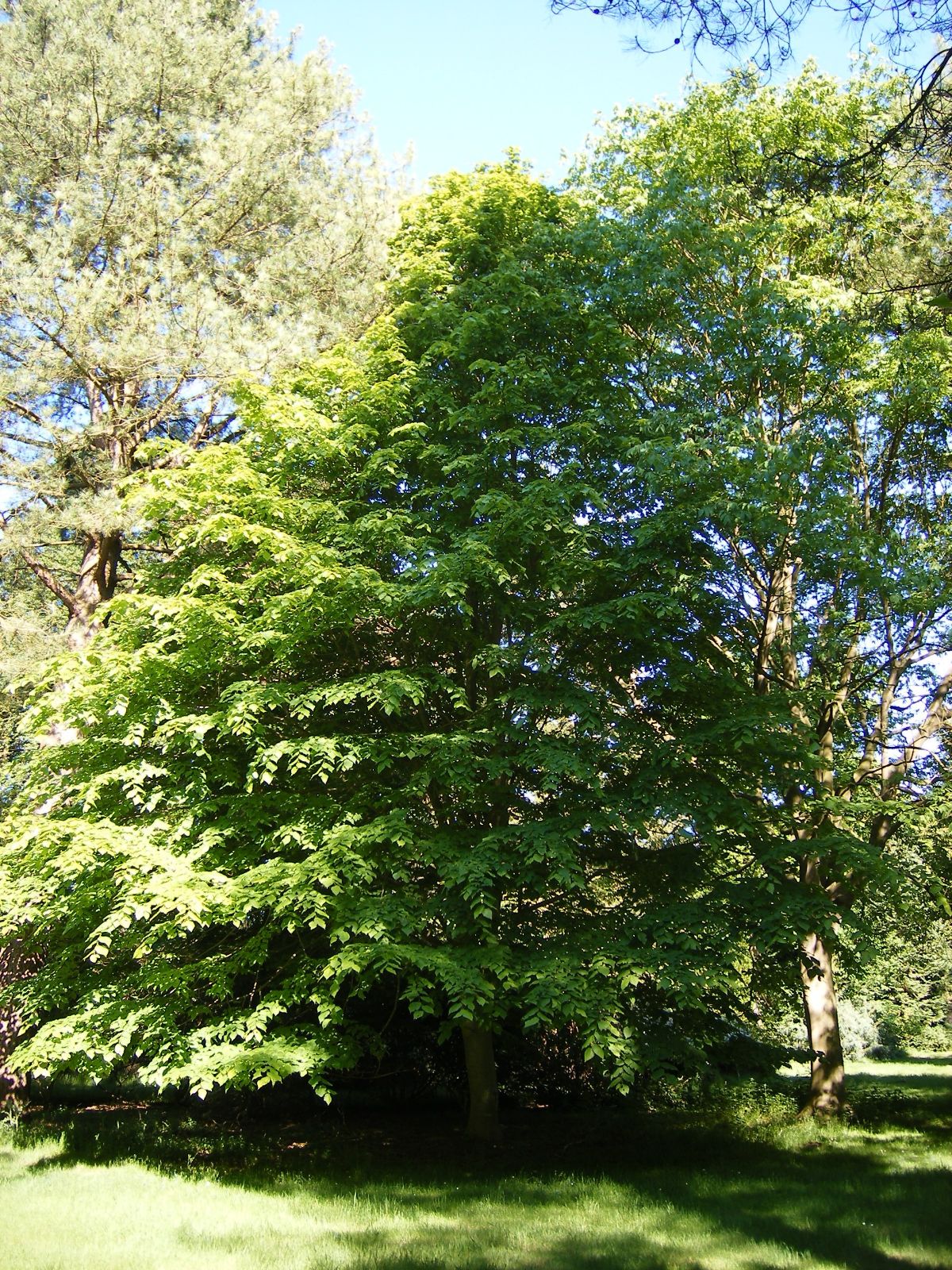Tilia dasystyla
Sponsor
Kindly sponsored by
a member of the International Dendrology Society
Credits
Owen Johnson & Julian Sutton (2020)
Recommended citation
Johnson, O. & Sutton, J. (2020), 'Tilia dasystyla' from the website Trees and Shrubs Online (treesandshrubsonline.
Genus
Infraspecifics
Other taxa in genus
- Tilia americana
- Tilia amurensis
- Tilia callidonta
- Tilia chinensis
- Tilia chingiana
- Tilia concinna
- Tilia cordata
- Tilia endochrysea
- Tilia × euchlora
- Tilia × europaea
- Tilia × flaccida
- Tilia × flavescens
- Tilia Hanwell Hybrids
- Tilia 'Harold Hillier'
- Tilia 'Harvest Gold'
- Tilia × haynaldiana
- Tilia henryana
- Tilia japonica
- Tilia × juranyana
- Tilia kiusiana
- Tilia mandshurica
- Tilia maximowicziana
- Tilia miqueliana
- Tilia mongolica
- Tilia nobilis
- Tilia × noziricola
- Tilia oliveri
- Tilia paucicostata
- Tilia platyphyllos
- Tilia tomentosa
- Tilia tuan
- Tilia 'Westonbirt Dainty'
Potentially large tree, to 35 m. Bark grey, developing ridges, which may crack into square scales. Branchlets slender (1.5–3 mm thick), often red, especially in sun, glabrous or with a few hairs. Buds 7–9 mm, with 3 visible scales, more or less glabrous, red or green. Petioles 2.5–5.5 cm; leaf blades 5–13 × 5–11 cm, broadly ovate or orbicular, tips acuminate, base cordate or obliquely truncate; upper surface green, lower surface somewhat greyish-green, with clusters of light brown hair in the vein axils; marginal teeth triangular, with apiculate tips 0.7–1.7 mm long. Bracts 5–14 × 0.8–2.6 cm, elliptic, lanceolate or oblanceolate. Inflorescence drooping, with 3–7 flowers; style sometimes densely hairy. Staminodes absent. Fruit 7–11 × 5–8 mm, spherical to obovoid, with a dense white tomentum. (Pigott 2012).
Distribution Armenia Azerbaijan Georgia Iran North Russia northern Caucasus Turkey Ukraine Crimea, near southern coast
Habitat Cliffs, scree slopes, woodland on hills and mountains.
USDA Hardiness Zone 6-7
RHS Hardiness Rating H6
Conservation status Least concern (LC)
The distribution of this variable West Asian species is centred on the Caucasus. Christian von Steven’s 1832 specific epithet implies a hairy style, something not shared by all examples of Tilia dasystyla.
Pigott (2012) recognises three subspecies, two of which are in cultivation and are described here. Of these, subsp. caucasica has by far the wider wild distribution and is much commoner in cultivation than subsp. dasystyla. Larger and older examples of Tilia dasystyla in western Europe are known or assumed all to belong to subsp. caucasica. A third, less well understood form is subsp. multiflora (Ledeb.) Pigott, known from the area where the northern Caucasus meets the Black Sea. It differs from subsp. caucasica only in having significantly more flowers per inflorescence, and is not known in cultivation. Subspecies can be distinguished using the key which follows, modified from Pigott (2012).
Identification key | ||
| 1a | Leaves ovate, 5–11 cm long, not glossy above. Bracts 7–14 cm long, lanceolate or oblanceolate, pale green, not waxy. | 2 |
| 1b | Leaves orbicular, 5–8 cm long, glossy above. Bracts 5–11 cm long, narrowly elliptic, waxy yellowish-green. | subsp. dasystyla |
| 2a | Inflorescence branched once or twice, with 3–7 flowers. | subsp. caucasica |
| 2b | Inflorescence branched three to four times, with 10–20 flowers. | subsp. multiflora |
subsp. caucasica (V. Engl.) Pigott
Synonyms
Tilia begoniifolia Steven
Tilia caucasica Rupr. nom. superfl. illegit.
Tilia rubra subsp. caucasica V. Engl.
Leaf blades 5–13 × 5–11 cm, broadly ovate, base cordate or obliquely truncate; upper surface not glossy. Bracts 7–14 × 1.1–2.6 cm, lanceolate or oblanceolate, dull pale green, not waxy. (Pigott 2012).
Distribution
- Armenia
- Azerbaijan
- Georgia
- Iran – North
- Russia – Northern Caucasus
- Turkey
RHS Hardiness Rating: H5
USDA Hardiness Zone: 6-7
It is an accident of history and the necessary conservatism of botanical nomenclature that this far more widespread and familar form of T. dasystyla is not the type. There appear to have been at least three significant introductions to Europe of this variable tree.
One form was sold around Europe by the Späth nursery of Germany in the 19th and perhaps early 20th centuries. Examples from this era include a tree in the Liege Botanic Garden, Belgium (1.04 m dbh in 2016 – monumentaltrees.com 2018). One in Ireland, planted in 1912 at Birr Castle, Co. Offaly was 23.5 m, dbh 1.21 m in 2010 (Tree Register 2018); the Royal Horticultural Society’s Award of Merit was given on the basis of this tree.
Through the mid-20th century, Hillier and Sons distributed a form, which makes a very elegant tree whose unusually large leaves have long mucronate tips. Specimens of this form have reached 25 m in England at the Westonbirt National Arboretum (2014); Althorp Park, Northamptonshire (2014); and at Stourhead, Wiltshire (2016). In Scotland, a tree planted in 1966 at St Andrews Botanic Garden, Fife was measured at 14 m in 2013 (Tree Register 2018). This variant has to count as one of the most handsome limes; it is most likely to be confused with glabrous forms of Tilia americana. (The absence of staminodes in the flowers of T. dasystyla is the clearest botanical distinction, but this species also has significantly larger tufts of hair in the vein axils under its leaves, which are typically more rounded in outline.)
T. dasystyla subsp. caucasica was reintroduced from Iran in 1972 by Roy Lancaster and Ann Ala (A&L 16). In trees from this collection the large leaves droop from the twigs – the former name T. begoniifolia was apt. Trees from A&L 16 have grown very vigorously in collections in the United Kingdom, reaching 16 m at the late Maurice Mason’s garden at Beachamwell, Norfolk by 2009 (Tree Register 2018). ‘Winter Red’, offered commercially in the United Kingdom in the 1990s, may have been a sale name for trees from this collection, which have deep red shoots in winter.
Although it might be expected to be growable in parts of the eastern seaboard, Great Lakes region and Pacific Northwest, this remains a rare tree in North American collections. The Arnold Arboretum, Massachusetts received material from European nurserymen including Späth and Veitch in the 1890s and early 1900s. Several good specimens of 70–90 cm dbh survive from this era alongside younger trees, some of known wild provenance (Arnold Arboretum 2020). There are several relatively young examples at the Morton Arboretum, Illinois, the oldest a 1990 accession from the Russian Caucasus (Morton Arboretum 2020).
subsp. dasystyla
Leaf blades 5–8 × 5–8 cm, orbicular, often as broad as long; base usually cordate; upper surface glossy dark green. Bracts 5–11 × 0.8–1.0 cm, narrowly elliptic, yellowish-green, waxy, characteristically stiff and recurved. (Grimshaw & Bayton 2009; Pigott 2012).
Distribution
- Ukraine – Crimea, near southern coast
A narrow endemic of southern Crimea, this form is distinctive for its small, rather thick leaves that are a shining dark green and are held poised above the stems. It is rather rare in horticulture; material obtained from botanic gardens should be checked, but the 10 m specimen at the National Botanic Garden of Belgium at Meise, grown from seed from Yalta Botanic Garden, appears to be correct (Grimshaw & Bayton 2009). Verified material has also recently been reintroduced from several localities in Crimea by Donald and Sheila Pigott. Specimens from these collections are established and flowering in several British gardens, including Kew; a tree in the Cambridge University Botanic Garden, from seed collected in 1992, had reached 8 m, dbh 15 cm by 2014 (Tree Register 2018).
subsp. multiflora (Ledeb.) Pigott
Synonyms
Tilia ledebourii Borbás
Taxonomic note The correct authorship of this subspecies is unclear: ipni.org gives ‘(Ledeb.) Pigott’ (followed here), whereas Plants of the World Online gives ‘(C.K. Schneid.) Pigott’.
This poorly understood subspecies may be represented in European cultivation by young plants. These are circulating under the name T. ledebourii, a synonym of subsp. multiflora, but it remains to be seen whether they are correctly identified (T. Christian pers. comm. 2020).










